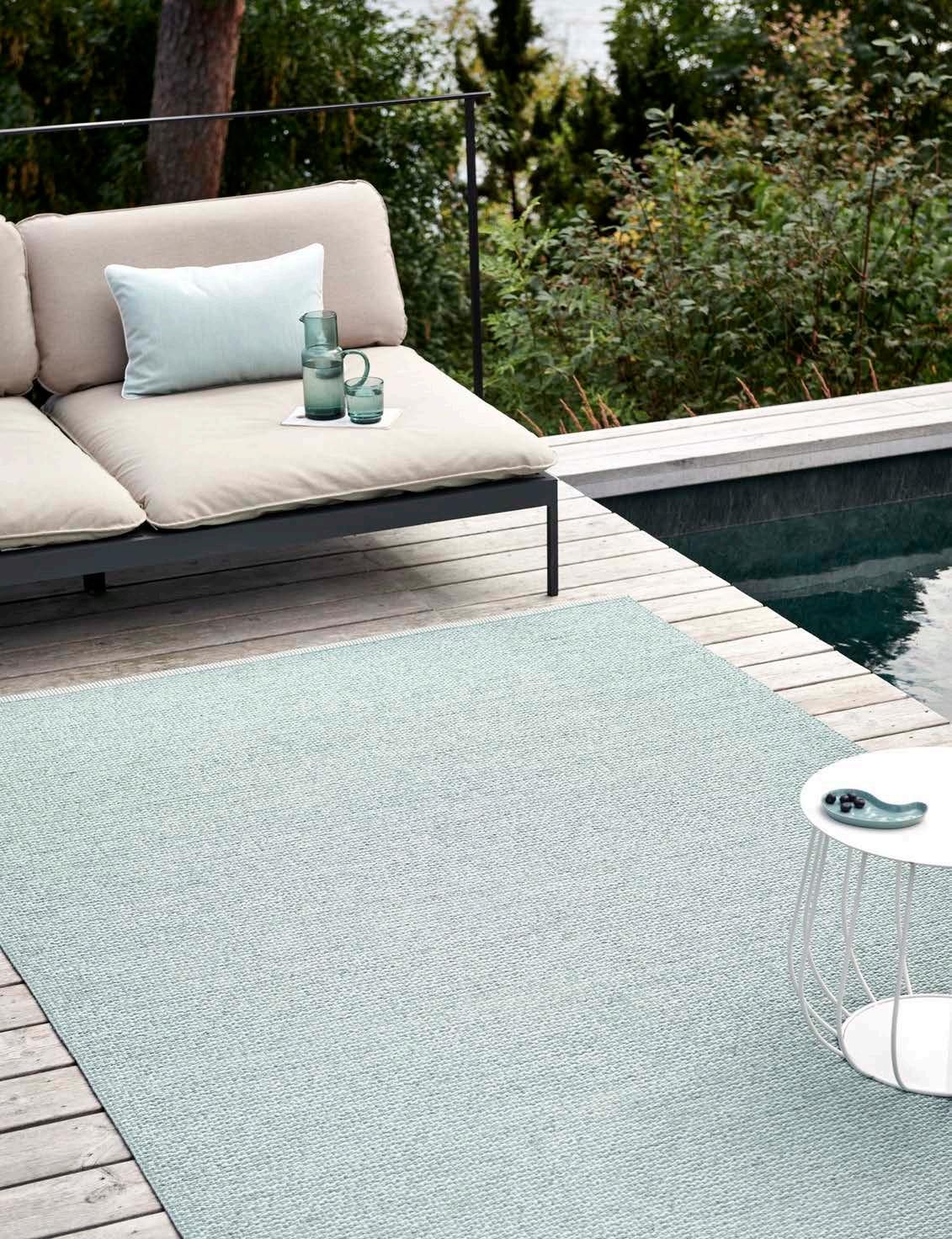
2 minute read
The story of Pappelina
After four years in the USA, Lina Rickardsson returned to her hometown of Falun in central Sweden. There, she came upon an old schoolhouse, home to a weavers’ association. With her life-long interest in weaving, it came as no surprise that Lina ended up behind a loom. This was how it all began in the late 90s, when Lina was just 24.
Shortly after, she moved to Gothenburg on the west coast of Sweden, where she took courses in painting and weaving. Her passion was the weaving, and soon, after noticing the interest in her work, Lina decided this would be her focus. With her products – linen rugs and paper placemats – in the crook of her arm, she visited possible retailers in Gothenburg. The reputable boutique Norrgavel, with stores in Stockholm, Malmö and Gothenburg, were instantly impressed with Lina’s handwoven rugs and ordered 24 pieces. With that, the journey started. From a wordplay with “paper”, “linen” and “Lina”, the brand name Pappelina was born.

Quickly, Lina realized that she would be unable to do all the weaving herself and began seeking out a weaving mill. At this time in Sweden, most such mills were struggling, many having already closed.
Finally, she discovered a small family-owned weaving mill in Dalarna, in the heart of Sweden, who wove with linen in the 50s. She was welcomed to set up a traditional loom alongside its three employees.
While there, Lina discovered a wealth of colorful plastic ribbons that had been used to make rugs in the 70s. Immediately, she was inspired to create experimental “new” rugs of plastic in which the bold-colored plastic itself would be the focus. Using a new tying technique and twice as much material as normal, she created a rug that would be the first of its kind on the market. Initially, the weavers at the mill were skeptical.
The rug would most likely not sell since the price would be too high due to the exceptionally large amount of material involved. But Lina believed in her idea: the new, thick, colorful plastic rug made its first appearance in January 2000 at the Formex trade fair in Stockholm. The interest in the new plastic rug changed Lina’s focus: she sold 124 rugs in plastic and 12 in linen.
At Formex in August 2001, Lina exhibited her plastic rug BOB – a classic blockstriped design, woven using a technique to give a soft, generous feel. It was awarded the distinction Formex Formidabel 2001 for best textile. The following year, the VERA rug made its debut at Formex. VERA was the first rug produced using the jacquard technique, which allows for free-form patterns. Success was immediate!
Today, we weave some 100 000 rugs each year and we are approximately 30 employees. You can find Pappelina products in over 45 countries.
We still weave our rugs in the same weaving mill. Production costs are higher compared to many other countries, yet the goal has always been to create a brand name that stands for quality and pride. This is best achieved by weaving the rugs in Sweden, where the traditions of weaving are rooted and with craftsmen that have been brought up by generations of weavers.
The rugs BOB and VERA remain bestsellers and are often termed classics within Scandinavian design. Lina continues to develop new patterns and new techniques. The product range may be increasing, but the essence of Pappelina remains the same: simple, stylish, functional.










